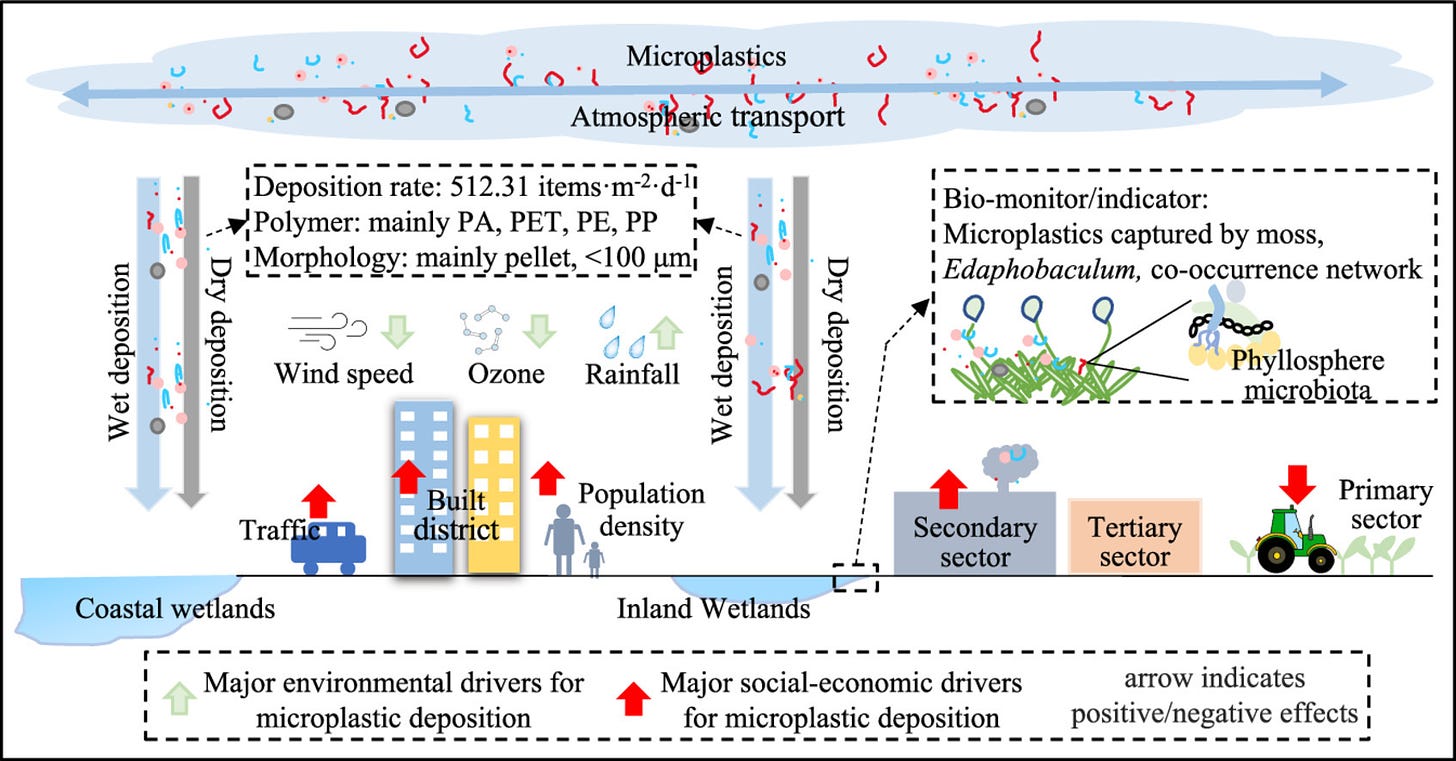Tiny microplastic particles raining down on us
A new paper shows that atmospheric deposition of microplastic from the air is not just fibers

One of the more disturbing aspects of microplastics in the environment is that they are also in the atmosphere, can be transported there, and thus rain down pretty much anywhere. This means that microplastic is probably also present in the most remote areas that have not even seen a plastic bottle.
Until recently, the dominant form of microplastic raining down was thought to be fibers, which makes sense: they are very light and very buoyant because of their shape, just nicely floating in the air.
Now a recent study carried out in the lab of my old friend Prof. Yi Huang at Peking University (first author is her PhD student Libo Xu) showed that there are much smaller microplastic fragments or pellets probably being more abundant. These tiny particles had previously escaped detection because they are too small to be reliable quantified using the optical identification method on filters. A new method has now revealed them. The particles are < 100 µm in size, and there were quite a lot of them, detected coming down from the atmosphere in the study area in China: about 500 items per square meter and day! Can you imagine how they must be accumulating in the soil (or in water bodies) if they don’t get degraded?
The origin of the particles is not yet clear. They are mostly spherical but also irregular in shape. The folks at Peking University think they are formed as a consequence of fragmentation from larger pieces, and that the spherical shape is because of abrasion in the environment.
I would like to have some of them for use in experiments, I think that would be awesome. But we don’t know how to get them, and we don’t know how to produce them — if any of you have any ideas, please let me know in the comments. I mean we could just collect them from the atmosphere, but then we would have to purify them to separate them from all the other things raining down. I don’t think that this is going to be an option…



Could a collection system similar to marine column traps work to collect such samples? I suppose this strategy will require further processing ...
I would also imagine shearing pure polymers to <100 um could work. Can these polymers be "sonicated" when frozen under vacuum?